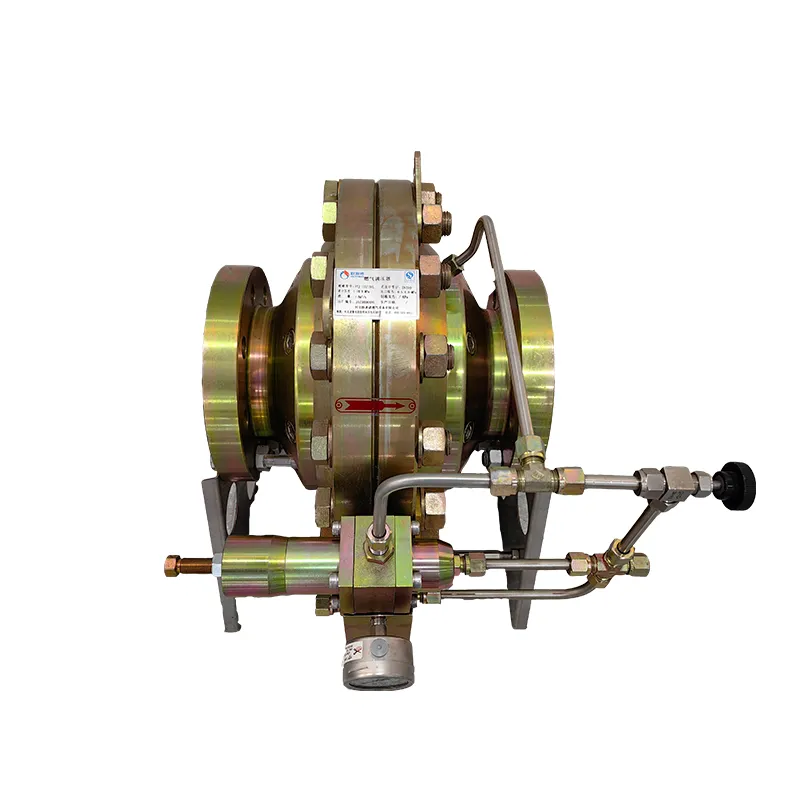
Oct . 11, 2024 07:39
Back to list
safety relief valve
Understanding Safety Relief Valves Importance and Functionality
Safety relief valves play a critical role in industrial safety, acting as essential mechanisms designed to prevent pressure build-up that can lead to catastrophic failures. These valves are crucial in various applications, including oil and gas, chemical processing, and HVAC systems. In this article, we will delve into the importance, functionality, and maintenance of safety relief valves.
What is a Safety Relief Valve?
A safety relief valve is a device that automatically opens to relieve excess pressure from a system, ensuring that pressure levels remain within safe operating limits. When the pressure in a system exceeds a predetermined level, the valve opens and allows fluid (liquid or gas) to escape, thus reducing pressure. Once the pressure drops back to a safe level, the valve closes, preventing any further loss of fluid.
Importance of Safety Relief Valves
1. Prevention of Explosions One of the primary functions of safety relief valves is to prevent explosions caused by excessive pressure. In many industries, equipment operates under high pressure, and failure to control this pressure can lead to catastrophic failures, resulting in severe damage, injury, or loss of life.
2. Regulatory Compliance Many industries are subject to strict regulations regarding safety and environmental protection. Safety relief valves are often required by law, and their proper installation and maintenance are critical for compliance with these regulations. Failure to comply can result in hefty fines and sanctions.
3. Protection of Equipment Excessive pressure can not only pose a danger to humans but also to equipment and machinery. Safety relief valves help to protect valuable assets from damage due to overpressure conditions, ensuring the longevity and reliability of equipment.
4. Operational Efficiency By maintaining safe pressure levels, safety relief valves contribute to the efficient operation of processes. This efficiency can improve productivity and reduce operational costs, as systems function optimally without the risk of overload.
How Do Safety Relief Valves Work?
safety relief valve

Safety relief valves operate based on a simple principle of pressure balance. The valve consists of a disk that is held against a seat by a spring. As pressure rises, it pushes against the disk. When the pressure exceeds the spring force, the disk lifts off the seat, allowing fluid to escape. The valve's design ensures that it can close tightly once the system pressure has decreased to a safe level.
Different types of safety relief valves exist, tailored to specific applications. For example, spring-loaded valves are commonly used for gases and some liquids, while pilot-operated valves are better suited for high-pressure applications. It's essential to select the right type of valve based on the specific needs of the system it will serve.
Maintenance of Safety Relief Valves
To ensure that safety relief valves function correctly, maintenance is paramount. Regular inspections should be performed to check for signs of wear, corrosion, or damage. It is also essential to verify that the valve operates at its designated set pressure and to check the valve's calibration.
Maintenance procedures may include
- Testing and Calibration Regularly testing the valve to ensure it opens at the correct pressure is crucial. This is especially important after any changes to the system, such as modifications or repairs.
- Cleaning Dirt and debris can impair the valve's performance. Regular cleaning helps ensure it operates smoothly.
- Replacement If a valve shows signs of significant wear or damage, it may need to be replaced to maintain safety.
Conclusion
Safety relief valves are indispensable components in many industrial applications, serving to protect both people and equipment from the dangers of overpressure. Their proper functioning ensures regulatory compliance, operational efficiency, and the prevention of catastrophic failures. By understanding how these valves operate and prioritizing their maintenance, industries can safeguard their operations and contribute to a safer working environment. Investing in the right safety relief valve and keeping it in optimal condition is not just a regulatory necessity but a critical aspect of operational integrity and safety.
Latest news
-
Safety Valve Spring-Loaded Design Overpressure ProtectionNewsJul.25,2025
-
Precision Voltage Regulator AC5 Accuracy Grade PerformanceNewsJul.25,2025
-
Natural Gas Pressure Regulating Skid Industrial Pipeline ApplicationsNewsJul.25,2025
-
Natural Gas Filter Stainless Steel Mesh Element DesignNewsJul.25,2025
-
Gas Pressure Regulator Valve Direct-Acting Spring-Loaded DesignNewsJul.25,2025
-
Decompression Equipment Multi-Stage Heat Exchange System DesignNewsJul.25,2025

